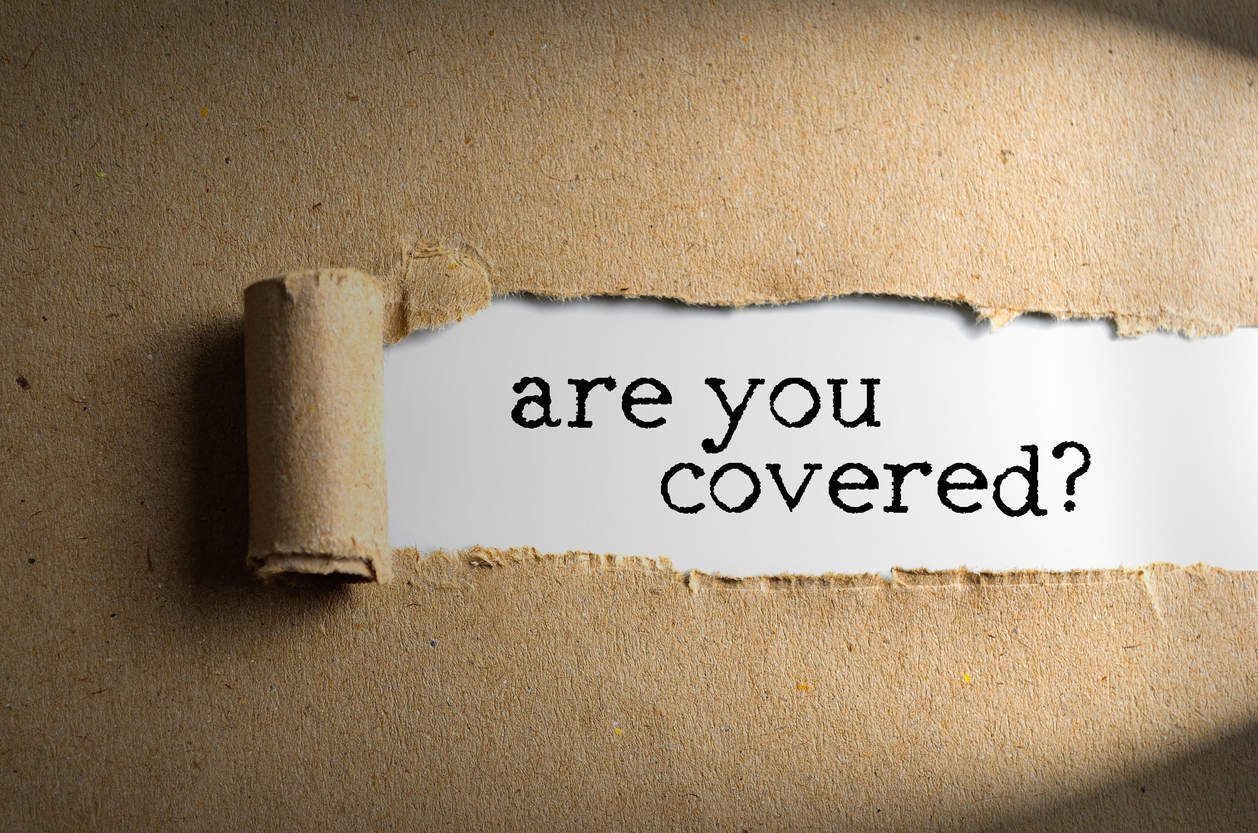If you are a new or prospective homebuyer, you may have been surprised to find that you have to pay for two different types of insurance for your new home. Even veteran homeowners may be confused by this practice. What’s the difference between homeowners insurance vs mortgage insurance? Aren’t they both designed to protect your most valued investment? Not exactly.
The most important difference between homeowners insurance vs mortgage insurance lies in who each type of insurance protects. Home insurance protects primarily you as the owner while offering indirect protection to your lender and their financial interest (More on that later.) Mortgage insurance, however, protects your mortgage lender in case you aren’t able to make your payments.
Homeowners’ Insurance
Most of us are probably pretty comfortable with the idea of homeowners’ insurance. Homeowners insurance covers your property and personal belongings in case of damage, theft, and natural disasters. Insurance will usually compensate owners for loss of use, such as hotel bills, laundry services, and meals if they are temporarily displaced.

A homeowners insurance policy will also offer some level of liability insurance and medical bill pay if someone is injured on your property. Liability insurance pays for property damages or medical expenses caused by the members of your household and protects you in the event of a lawsuit.
Home Insurance and Lenders
Most mortgage lenders require you to ensure your home because it protects their financial investment. But it is a good general practice for homeowners, even in the rare case that your lender doesn’t require it.
If you were to lose your home and all of your belongings in a house fire, you likely would not have the savings or income to replace everything you lost. Home insurance offers the peace of mind that you would not be left destitute in the worst-case scenario.
Many lenders will roll your home insurance and property taxes into your mortgage payment. The extra money that you pay toward these bills goes into an escrow account, which the lender uses to pay the bills on your behalf.
Many homeowners prefer escrows since it gives them fewer bills to worry about, but it also takes away some financial freedom. The money in the escrow account isn’t available for you to use or earn interest on like you could if it was simply in your savings account until the payment was due. If you are a first-time homebuyer and would like more information on home insurance, check out this article on Forbes, “New Homebuyers’ Guide to Home Insurance.”
Mortgage Insurance
Mortgage insurance is typically required on a conventional home loan when you make a down-payment of less than 20% of the loan amount. A mortgage loan with a smaller down payment is considered a higher risk by banks and mortgage lenders.
If you fall into this category, however, you’re in good company. The National Association of Realtors state that the average homebuyer in 2021 put down 13% on their home purchase. First-time homebuyers put between 6 and 7% down on average.
Mortgage insurance does not offer any protection to the homeowner but protects the lender from financial loss by compensating them for missed payments.

If you are required to purchase Private Mortgage Insurance (PMI) with a conventional loan, you can usually choose to pay the entire amount up-front or make monthly payments. Most homeowners will choose a monthly payment option and budget PMI into their monthly mortgage payment. PMI costs can vary, so make sure to shop around for the best rate.
Some conventional lenders offer a third option—lender-paid mortgage insurance. With this option, the lender increases interest on the loan to account for the higher risk, and you don’t have to worry about paying for the insurance directly.
Do I Need Both Home and Mortgage Insurance?
Whether or not you need both homeowners and mortgage insurance will depend on your lender and personal financial situation.
We mentioned above that most homeowners would benefit from home insurance even if their lender doesn’t require it. Though it does add an additional monthly expense, it also provides much-needed comfort and security in emergency situations.
Mortgage insurance, however, is only necessary for some homebuyers. Though you do not receive any direct protection from this type of insurance, it does allow you to purchase a home for a lower down-payment.
First-time homebuyers are often motivated by the desire to start investing in their own home, rather than paying monthly rent. In this case, investing in something that offers long-term benefits may offset the extra expense of mortgage insurance.
Ways to Avoid Mortgage Insurance
If you would like to avoid paying for mortgage insurance, you do have a few options. The simplest would be to save for a 20% down-payment before purchasing a home, but for many, this is not a feasible option.
You can ask your lender to pay. Remember (as mentioned in the Mortgage Insurance section) that this option will result in a higher interest rate on the loan. If you are considering this option, we recommend calculating the cost of PMI vs the higher-interest rate to find the best deal.
A piggyback loan would also eliminate the need for PMI. In this scenario, you would find a second lender who can provide the funds to supplement your down payment, which would distribute the risk between lenders. A common ratio for piggyback loans is 80% from the first lender, 10% from the second, and a 10% down payment.
El Paso County offers an interest-free second loan option for qualifying Colorado Springs homebuyers.
Look for qualifying low down-payment programs. Some lenders offer programs that allow for low down-payments without PMI. First-time homebuyers, low-income households, and certain professions, such as teachers and first-responders, can all benefit from these types of programs.
Shop for a different lender. Some lenders do not require PMI, even with a lower down-payment. Make sure to compare all other costs as well, so that you can make the best decision for your situation.
How Mortgage Insurance Works With Different Loan Types
Mortgage insurance functions differently depending on the loan type that you have. Most of the information in the first part of this article is based on conventional mortgages, but here we will break down how mortgage insurance works with FHA, VA, and USDA loans as well.
Conventional Loans
A lender may require you to purchase PMI for a conventional loan if your down-payment is less than 20% of the purchase price. The good news is that you can usually cancel your mortgage insurance once you have reached 20% of your home equity.
Pay attention to the terms of your insurance, however. Some companies will automatically cancel your mortgage insurance once your balance reaches 78% of the home’s value, but many will continue billing you for mortgage insurance until you request a cancellation.
It is up to you to track your loan balance and send in a written cancellation request so that you don’t end up paying more than you have to.
FHA Loans
FHA mortgages require mortgage insurance premiums (MIP) for all borrowers, regardless of the down payment amount. You will be charged an upfront mortgage insurance premium when the loan is approved, as well as an annual premium.
If you put down less than 10% with an FHA loan, you will be required to have mortgage insurance for the entire life of the loan. If you put down more than 10%, you can cancel your MIP after 11 years.
USDA Loans
Mortgage insurance for a USDA loan is very similar to an FHA mortgage insurance premium—you will pay both an up-front guarantee fee and an annual fee. There is no option to remove the annual fee for a USDA loan, but it is significantly cheaper than MIP on an FHA loan or PMI on a conventional loan.
VA Loans
VA loans don’t require mortgage insurance, even with 0% down. The VA insures the loan, protecting the lender from the risk of default or missed payments if the veteran can no longer pay.
The closest you will get to PMI with a VA loan is the VA funding fee. This fee helps lower the cost of VA loans for taxpayers. The fee percentage decreases slightly with a larger down-payment, ranging from 1.4% to 3.6% of the home’s value.
Mortgage Insurance: Pros and Cons
Mortgage insurance may seem like an unnecessary expense when you are looking to purchase a home, but for many individuals, saving for a 20% down payment in today’s market is not a feasible option.
Mortgage insurance allows you to get qualified for a mortgage and start investing in a home of your own with a minimal down payment. Mortgage insurance offers security to financial institutions and allows them to approve higher-risk loans than they normally would.
If you are set on avoiding an extra payment, however, you can look for lenders that don’t require PMI or research local down payment assistance programs. VA loans are also a great option for qualifying service members.
Feel free to reach out to our Springs Homes team if you have any questions or would like to be put in touch with one of our preferred lenders to discuss next steps for purchasing or refinancing your home.

